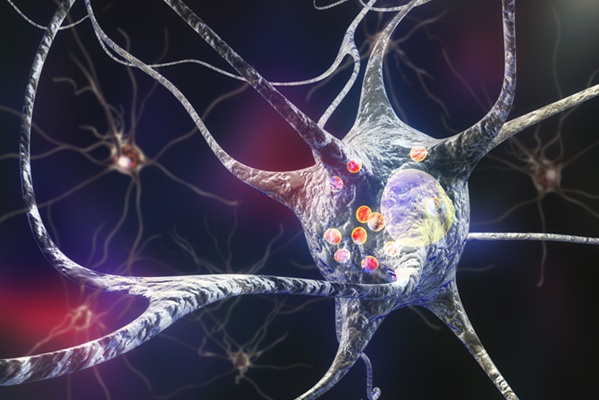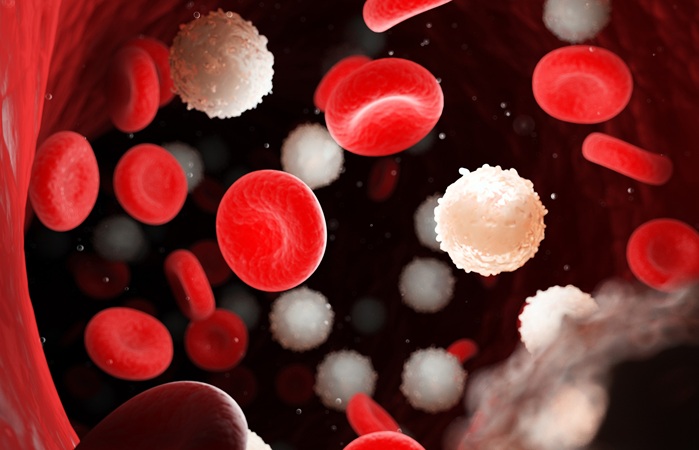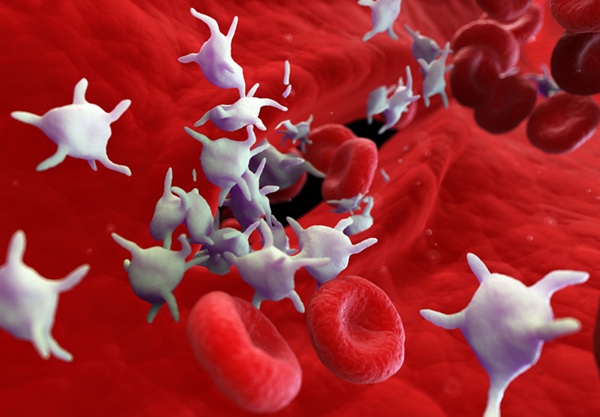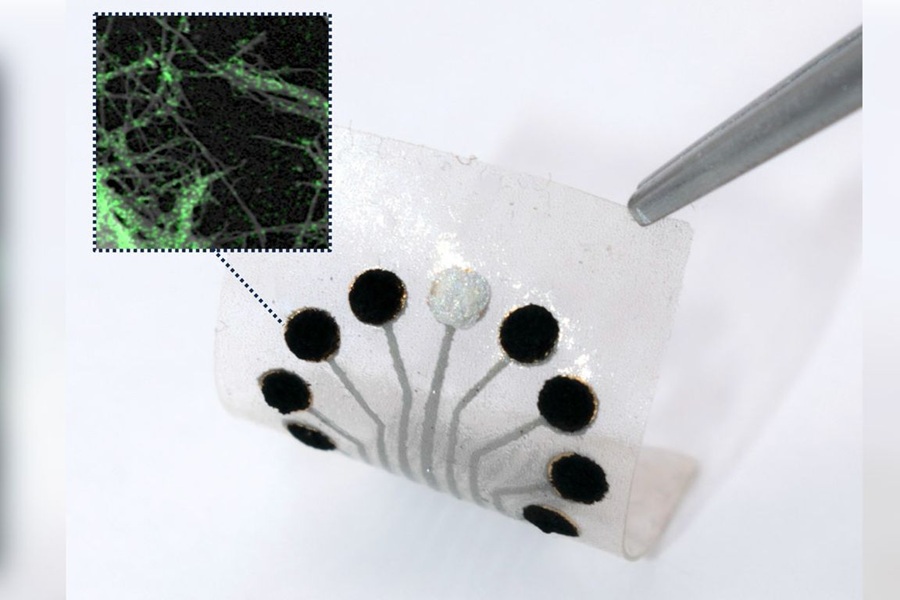HDL Cholesterol Efflux Capacity a Better Predictor of Cardiovascular Disease Risk Than Measurement of HDL or HDL Cholesterol
|
By LabMedica International staff writers Posted on 30 Nov 2014 |
A recent paper strengthened the hypothesis that HDL (high-density lipoprotein) function, rather than the absolute concentration of this lipoprotein, is the key factor linking HDL and cardiovascular disease (CVD).
The link between levels of HDL cholesterol and cardiovascular disease (CVD) is well established, but the mechanisms underlying this association had remained elusive. To gain a better understanding of this relationship, investigators at the University of Texas Southwestern Medical Center (Dallas, USA) measured HDL cholesterol level, HDL particle concentration, and cholesterol efflux capacity at in 2,924 adults free from cardiovascular disease who were participants in the Dallas Heart Study, a probability-based population sample. Over a median follow-up period of 9.4 years the investigators evaluated the participants for development of atherosclerotic cardiovascular disease, defined as a first nonfatal myocardial infarction, nonfatal stroke, or coronary revascularization or death from cardiovascular causes.
Results revealed that cholesterol efflux capacity (cholesterol efflux), which measures HDL cholesterol function, appeared to be a superior indicator of cardiovascular risk and a better target for therapeutic treatments than standard measurements of HDL. In a fully adjusted model that included traditional risk factors, HDL cholesterol level, and HDL particle concentration, there was a 67% reduction in cardiovascular risk in participants with the highest quarter of cholesterol efflux capacity versus those with the lowest quarter.
“HDL is very dynamic. It has many functions that are not fully captured by the measurement of static cholesterol levels,” said first author Dr. Rohatgi, assistant professor of internal medicine at the University of Texas Southwestern Medical Center. “The hypothesis has changed from an HDL-cholesterol hypothesis to an HDL-function hypothesis to better capture cardiovascular risk and provide a better target for therapy to reduce that risk. We drew on the strengths of the Dallas Heart Study to thoroughly investigate the relationship between HDL function and cardiovascular disease What we found was a strong, graded, protective relationship between cholesterol efflux and incidence of cardiovascular events among people who were free from heart disease at baseline testing.”
The study was published in the November 18, 2014, online edition of the New England Journal of Medicine.
Related Links:
University of Texas Southwestern Medical Center
The link between levels of HDL cholesterol and cardiovascular disease (CVD) is well established, but the mechanisms underlying this association had remained elusive. To gain a better understanding of this relationship, investigators at the University of Texas Southwestern Medical Center (Dallas, USA) measured HDL cholesterol level, HDL particle concentration, and cholesterol efflux capacity at in 2,924 adults free from cardiovascular disease who were participants in the Dallas Heart Study, a probability-based population sample. Over a median follow-up period of 9.4 years the investigators evaluated the participants for development of atherosclerotic cardiovascular disease, defined as a first nonfatal myocardial infarction, nonfatal stroke, or coronary revascularization or death from cardiovascular causes.
Results revealed that cholesterol efflux capacity (cholesterol efflux), which measures HDL cholesterol function, appeared to be a superior indicator of cardiovascular risk and a better target for therapeutic treatments than standard measurements of HDL. In a fully adjusted model that included traditional risk factors, HDL cholesterol level, and HDL particle concentration, there was a 67% reduction in cardiovascular risk in participants with the highest quarter of cholesterol efflux capacity versus those with the lowest quarter.
“HDL is very dynamic. It has many functions that are not fully captured by the measurement of static cholesterol levels,” said first author Dr. Rohatgi, assistant professor of internal medicine at the University of Texas Southwestern Medical Center. “The hypothesis has changed from an HDL-cholesterol hypothesis to an HDL-function hypothesis to better capture cardiovascular risk and provide a better target for therapy to reduce that risk. We drew on the strengths of the Dallas Heart Study to thoroughly investigate the relationship between HDL function and cardiovascular disease What we found was a strong, graded, protective relationship between cholesterol efflux and incidence of cardiovascular events among people who were free from heart disease at baseline testing.”
The study was published in the November 18, 2014, online edition of the New England Journal of Medicine.
Related Links:
University of Texas Southwestern Medical Center
Latest Clinical Chem. News
- Low-Cost Portable Screening Test to Transform Kidney Disease Detection
- New Method Uses Pulsed Infrared Light to Find Cancer's 'Fingerprints' In Blood Plasma
- Carbon Nanotubes Help Build Highly Accurate Sensors for Continuous Health Monitoring
- Paper-Based Device Boosts HIV Test Accuracy from Dried Blood Samples
- AI-Powered Raman Spectroscopy Method Enables Rapid Drug Detection in Blood
- Novel LC-MS/MS Assay Detects Low Creatinine in Sweat and Saliva
- Biosensing Technology Breakthrough Paves Way for New Methods of Early Disease Detection
- New Saliva Test Rapidly Identifies Paracetamol Overdose
- POC Saliva Testing Device Predicts Heart Failure in 15 Minutes

- Screening Tool Detects Multiple Health Conditions from Single Blood Drop
- Integrated Chemistry and Immunoassay Analyzer with Extensive Assay Menu Offers Flexibility, Scalability and Data Commutability
- Rapid Drug Test to Improve Treatment for Patients Presenting to Hospital
- AI Model Detects Cancer at Lightning Speed through Sugar Analyses
- First-Ever Blood-Powered Chip Offers Real-Time Health Monitoring
- New ADLM Guidance Provides Expert Recommendations on Clinical Testing For Respiratory Viral Infections
- 3D Printed Point-Of-Care Mass Spectrometer Outperforms State-Of-The-Art Models
Channels
Molecular Diagnostics
view channel
Novel Autoantibody Against DAGLA Discovered in Cerebellitis
Autoimmune cerebellar ataxias are strongly disabling disorders characterized by an impaired ability to coordinate muscle movement. Cerebellar autoantibodies serve as useful biomarkers to support rapid... Read more
Gene-Based Blood Test Accurately Predicts Tumor Recurrence of Advanced Skin Cancer
Melanoma, an aggressive form of skin cancer, becomes extremely difficult to treat once it spreads to other parts of the body. For patients with metastatic melanoma tumors that cannot be surgically removed... Read moreHematology
view channel
New Scoring System Predicts Risk of Developing Cancer from Common Blood Disorder
Clonal cytopenia of undetermined significance (CCUS) is a blood disorder commonly found in older adults, characterized by mutations in blood cells and a low blood count, but without any obvious cause or... Read more
Non-Invasive Prenatal Test for Fetal RhD Status Demonstrates 100% Accuracy
In the United States, approximately 15% of pregnant individuals are RhD-negative. However, in about 40% of these cases, the fetus is also RhD-negative, making the administration of RhoGAM unnecessary.... Read moreImmunology
view channel
Stem Cell Test Predicts Treatment Outcome for Patients with Platinum-Resistant Ovarian Cancer
Epithelial ovarian cancer frequently responds to chemotherapy initially, but eventually, the tumor develops resistance to the therapy, leading to regrowth. This resistance is partially due to the activation... Read more
Machine Learning-Enabled Blood Test Predicts Immunotherapy Response in Lymphoma Patients
Chimeric antigen receptor (CAR) T-cell therapy has emerged as one of the most promising recent developments in the treatment of blood cancers. However, over half of non-Hodgkin lymphoma (NHL) patients... Read moreMicrobiology
view channel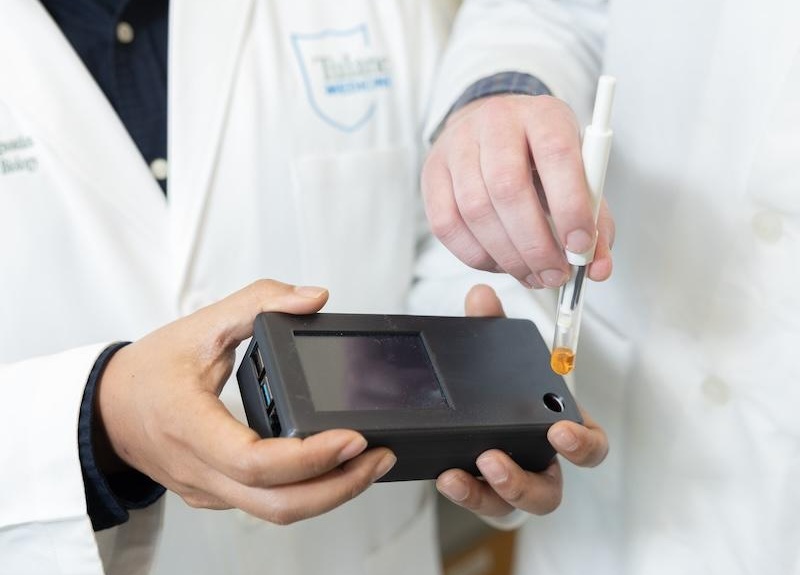
Handheld Device Delivers Low-Cost TB Results in Less Than One Hour
Tuberculosis (TB) remains the deadliest infectious disease globally, affecting an estimated 10 million people annually. In 2021, about 4.2 million TB cases went undiagnosed or unreported, mainly due to... Read more
New AI-Based Method Improves Diagnosis of Drug-Resistant Infections
Drug-resistant infections, particularly those caused by deadly bacteria like tuberculosis and staphylococcus, are rapidly emerging as a global health emergency. These infections are more difficult to treat,... Read more
Breakthrough Diagnostic Technology Identifies Bacterial Infections with Almost 100% Accuracy within Three Hours
Rapid and precise identification of pathogenic microbes in patient samples is essential for the effective treatment of acute infectious diseases, such as sepsis. The fluorescence in situ hybridization... Read morePathology
view channel
Novel UV and Machine Learning-Aided Method Detects Microbial Contamination in Cell Cultures
Cell therapy holds great potential in treating diseases such as cancers, inflammatory conditions, and chronic degenerative disorders by manipulating or replacing cells to restore function or combat disease.... Read more
New Error-Corrected Method to Help Detect Cancer from Blood Samples Alone
"Liquid biopsy" technology, which relies on blood tests for early cancer detection and monitoring cancer burden in patients, has the potential to transform cancer care. However, detecting the mutational... Read more
"Metal Detector" Algorithm Hunts Down Vulnerable Tumors
Scientists have developed an algorithm capable of functioning as a "metal detector" to identify vulnerable tumors, marking a significant advancement in personalized cancer treatment. This breakthrough... Read more
Novel Technique Uses ‘Sugar’ Signatures to Identify and Classify Pancreatic Cancer Cell Subtypes
Pancreatic cancer is often asymptomatic in its early stages, making it difficult to detect until it has progressed. Consequently, only 15% of pancreatic cancers are diagnosed early enough to allow for... Read moreTechnology
view channel
Pain-On-A-Chip Microfluidic Device Determines Types of Chronic Pain from Blood Samples
Chronic pain is a widespread condition that remains difficult to manage, and existing clinical methods for its treatment rely largely on self-reporting, which can be subjective and especially problematic... Read more
Innovative, Label-Free Ratiometric Fluorosensor Enables More Sensitive Viral RNA Detection
Viruses present a major global health risk, as demonstrated by recent pandemics, making early detection and identification essential for preventing new outbreaks. While traditional detection methods are... Read moreIndustry
view channel
Cepheid and Oxford Nanopore Technologies Partner on Advancing Automated Sequencing-Based Solutions
Cepheid (Sunnyvale, CA, USA), a leading molecular diagnostics company, and Oxford Nanopore Technologies (Oxford, UK), the company behind a new generation of sequencing-based molecular analysis technologies,... Read more
Grifols and Tecan’s IBL Collaborate on Advanced Biomarker Panels
Grifols (Barcelona, Spain), one of the world’s leading producers of plasma-derived medicines and innovative diagnostic solutions, is expanding its offer in clinical diagnostics through a strategic partnership... Read more












